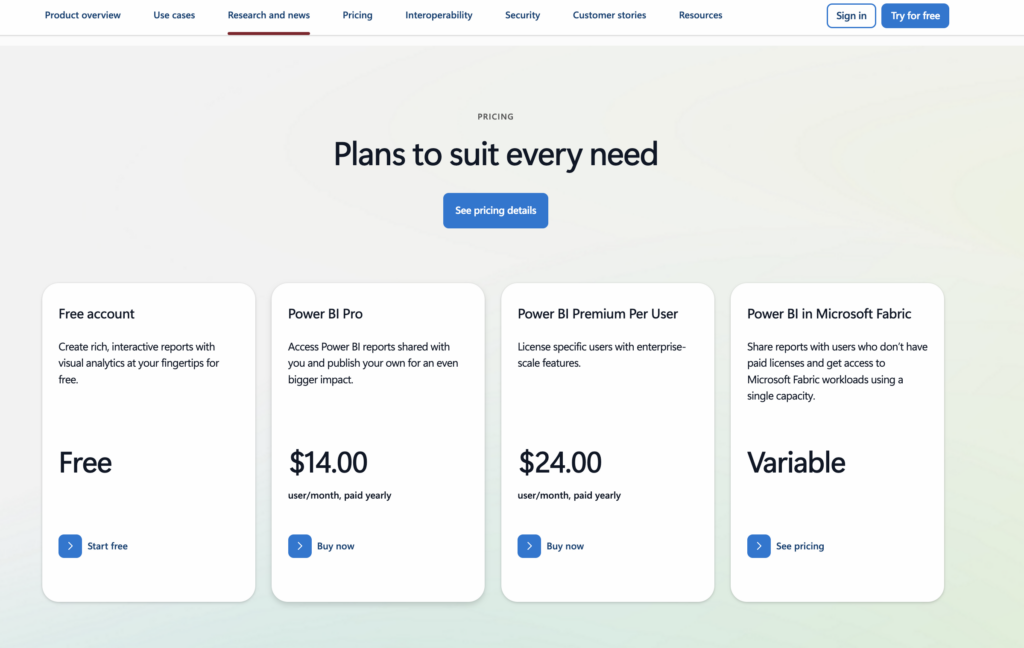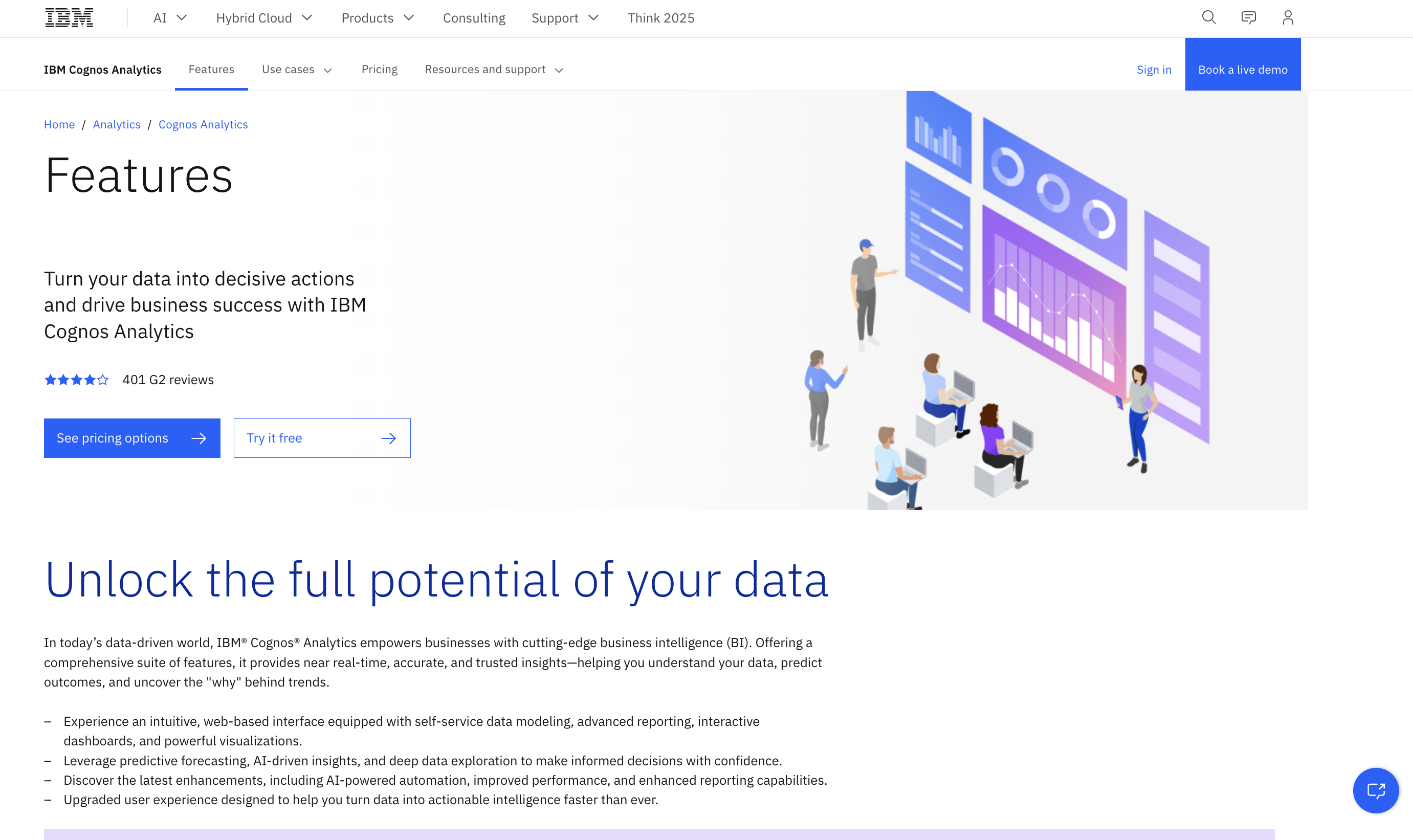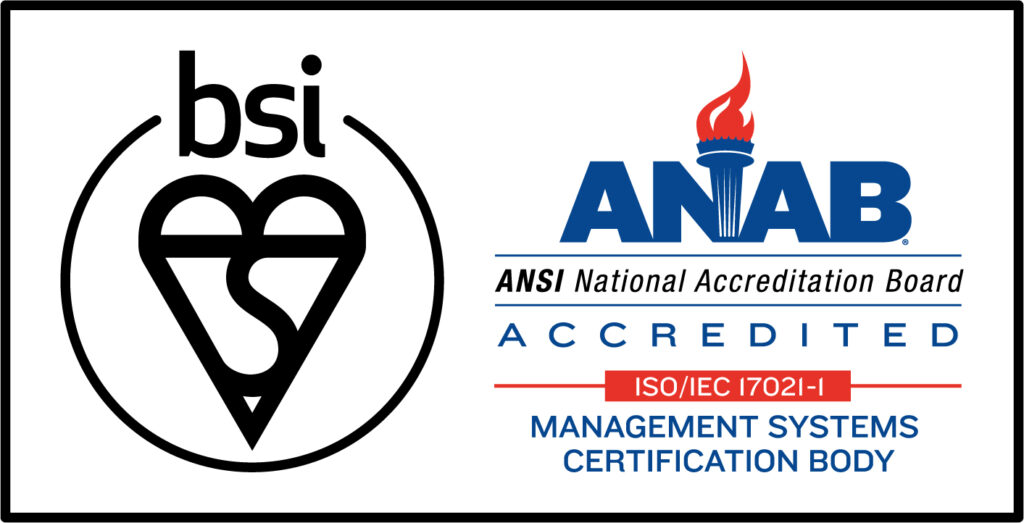1. You Have the Data — But Are You Making the Right Decisions? Why BI Tools Matter More Than Ever

In today’s business landscape, “data-driven decision-making” has become more than just a buzzword — it’s a fundamental strategy across industries.
Every day, companies accumulate mountains of data: marketing reports, customer behavior logs, sales performance trends, and more.
But despite this abundance of information, decision-making often still relies on gut instinct rather than data.
Have you ever heard — or said — things like, “Where did those numbers come from again?” or “Let me double-check with the data team”?
The problem isn’t a lack of data. It’s a lack of actionable insight.
The truth is simple: most teams don’t yet have the tools — or the mindset — to truly understand and leverage their data.
That’s where Business Intelligence (BI) tools come in.
BI tools transform raw data into meaningful visuals, trends, and insights — turning overwhelming spreadsheets into a clear narrative that teams can act on.
In this article, we’ll take a closer look at 10 of the most popular and effective BI tools as of 2025.
We’ll explore what makes each unique, how they compare, and which tools might best fit your team’s goals and tech environment.
2. What Exactly Are BI (Business Intelligence) Tools?

So what do we really mean when we say “BI tool”?
BI stands for “Business Intelligence” — tools designed to help organizations make smarter, faster decisions.
More specifically, a BI tool collects, visualizes, and analyzes data from across your business systems — from sales platforms and marketing dashboards to CRMs and spreadsheets — to support data-backed decision-making.
🔧 What Can BI Tools Do?
Dashboards: Display key performance indicators (KPIs) at a glance
Data Visualization: Turn complex information into easy-to-understand graphs, charts, and maps
Data Integration: Connect to Excel, databases, CRMs, marketing tools, and more
Analytics: Enable filtering, segmentation, trend analysis, and predictive modeling
Collaboration & Sharing: Share reports, comment in real-time, and manage user permissions
🛑 Without BI Tools, You Might Face:
Manual data extraction and processing that wastes time
Inability to monitor KPIs in real time
Overworked data teams constantly creating reports
Decision-making that relies on gut feeling rather than facts
✅ With BI Tools, You Can:
Tell a clear story with your data
Help anyone quickly understand what the numbers mean
Improve overall data literacy across the organization
Make faster, more informed decisions with confidence
In short: BI tools turn raw numbers and complex data into meaningful insights that drive real action.
3. Why BI Tools Are More Essential Than Ever
Business Intelligence tools aren’t new — companies have long used data to support their decision-making.
But today, the importance of BI tools has skyrocketed. Why? Because the environment in which we use data has fundamentally changed.
Here are three key reasons BI tools are more critical than ever:
① The Explosion of Data — and the Speed It Moves

We’re living in the era of big data.
Web traffic, customer behavior logs, social media activity, IoT sensors, SaaS platforms — data is being created and flowing faster than ever.
Trying to manage it all manually through spreadsheets simply isn’t scalable anymore.
② Intuition Isn’t Enough — It’s Time to Speak in Data

“I have a feeling this will work” doesn’t cut it anymore.
In modern business, every team — from marketing and operations to leadership — is expected to explain and justify decisions using data.
BI tools act as a shared language across departments, helping everyone align around the same numbers and insights.
③ Speed = Competitive Advantage

If you take too long to analyze data, it loses its value.
Being able to understand what’s happening in real time — and act on it immediately — is the difference between seizing an opportunity and missing it.
BI tools enable this kind of fast, confident decision-making through automated reports, live dashboards, and powerful drill-downs in just a few clicks.
In summary:
Data is bigger and more diverse than ever
Fast, informed decisions are critical to success
Organizations must raise their overall data literacy
These are the reasons why BI tools have become a must-have — not just for data teams, but for every decision-maker across the business.
4. How to Choose the Right BI Tool for Your Business: 5 Key Criteria
BI tools may all look impressive on the surface.
But what works for one company may not be the right fit for yours.
Here are five practical and realistic factors to help you evaluate BI tools and find the one that aligns best with your team and infrastructure.
① Technical Skills of Your Team

If your organization is mostly made up of non-engineers, you’ll want a tool with an intuitive UI and drag-and-drop features.
On the other hand, if you have a data team, you might benefit from tools that support advanced capabilities like SQL, R, or Python.✔️ Ask yourself: Can your team comfortably work with SQL or other scripting languages?
② Integration with Existing Systems

How easily can the BI tool connect with your current stack — ERP, CRM, marketing platforms, or cloud storage?
Support for tools like Excel, Google Sheets, Salesforce, or Snowflake should be part of your evaluation.
✔️ Ask yourself: Where is your data stored right now, and which systems must it connect to?
③ Dashboard Flexibility & Visualization Quality

Think about how you want your KPIs presented.
Can the tool match your brand’s visual tone and allow for flexible dashboard design?
✔️ Ask yourself: Are simple reports enough, or do you need highly customized, interactive dashboards?
④ Licensing Costs & Scalability

Pricing isn’t just about today — it’s about how well the tool can scale with your team.
Check if the licensing model fits your current size and future growth.
✔️ Ask yourself: You have 10 users now, but what if you grow to 100 in a year?
⑤ Collaboration & Sharing Features

How easily can reports be shared across teams?
Look for real-time commenting, role-based access, and integrations with tools like Slack or email.
✔️ Ask yourself: Are you still sending screenshots of reports manually?
5. 10 Leading BI Tools to Know in 2025

The BI tools market is filled with options — and while many solutions offer powerful features, not all are created equal.
In this section, we’ve handpicked 10 standout BI platforms based on their capabilities, popularity, and proven use in real business environments.
Each tool comes with its own strengths, specializations, and ideal use cases — so it’s important to assess them through the lens of your organization’s needs.
| BI Tool | Provider | Notable Strengths |
|---|---|---|
| Power BI | Microsoft | Intuitive interface, deep Microsoft integration, widely adopted |
| Tableau | Salesforce | Advanced data visualization, strong analytics, drag-and-drop UI |
| Microsoft Fabric | Microsoft | Unified analytics platform powered by OneLake, future-ready architecture |
| Qlik Sense | Qlik | AI-driven suggestions, self-service analytics for all users |
| Looker | Google (Alphabet) | SQL-based modeling, optimized for BigQuery |
| IBM Cognos Analytics | IBM | Enterprise-grade reporting, automation, robust access control |
| Sisense | Sisense | Embedded BI focus, strong API flexibility |
| TIBCO Spotfire | TIBCO | Statistical and predictive analytics, R/Python integration |
| Yellowfin BI | Yellowfin | Data storytelling, collaborative reporting features |
| Dundas BI | Dundas Data | High customizability, developer-friendly design environment |
In the sections that follow, we’ll take a closer look at each tool — covering core features, pros and cons, and the types of organizations they’re best suited for.
Ready to dive deeper? Let’s explore the top BI tools one by one.
① Microsoft Power BI
Microsoft Power BI is one of the most widely used BI tools in the world.
Thanks to its seamless integration with Excel and Office 365, it’s especially popular among users already familiar with the Microsoft ecosystem — from small startups to global enterprises.
🧩 Key Features
Developed by Microsoft, Power BI integrates deeply with Office 365, Azure, and other Microsoft services
High compatibility with Excel and supports a wide range of connectors and real-time dashboards
✅ Pros
User-friendly interface with a low learning curve
Strong documentation and a large online community
A natural fit for organizations already using Microsoft products
⚠️ Cons
Limited flexibility in complex data modeling
Performance may lag with very large datasets
💼 Ideal Use Cases
Companies of any size that already rely on Microsoft tools
Teams looking to automate and streamline Excel-based reporting
💰 Pricing

Official Site:Microsoft Power BI
② Tableau
Tableau is a globally recognized BI platform known for its powerful data visualization capabilities.
With its drag-and-drop interface, it empowers not only data analysts but also marketing and strategic teams to explore and present data intuitively.
Now part of Salesforce, Tableau offers strong integration with the broader Salesforce ecosystem.
🧩 Key Features
A visualization-first BI tool with rich charting options and interactive drill-down features
Especially strong at converting complex datasets into clear, visual stories
✅ Pros
Stunning visuals and highly customizable dashboards
Fast performance, even with large datasets
Ideal for teams focused on advanced analytics and insight-driven decision-making
⚠️ Cons
Slightly steeper learning curve, especially for new users
May be challenging for non-technical users without training
Higher pricing compared to some alternatives
💼 Ideal Use Cases
Data-driven teams that prioritize analytics
Marketing or strategic planning departments that rely on visual storytelling in reports
💰 Pricing: Available upon request. For detailed information, visit the official Tableau website.
Official Site:Tableau
③ Microsoft Fabric
Microsoft Fabric is a next-generation analytics platform that unifies Microsoft’s key data services — including Power BI, Synapse, and Data Factory — into a single, enterprise-ready ecosystem.
Officially launched in 2023, it’s built around OneLake, a unified data lake that enables end-to-end data ingestion, transformation, analysis, and sharing.
Fabric is ideal for Power BI users and organizations seeking a scalable, integrated analytics environment.
🧩 Key Features
All-in-one analytics suite combining Power BI, Synapse, and Data Factory
Unified data lake architecture via OneLake enables seamless cross-departmental integration
Deep, native integration with Microsoft Azure and other Microsoft cloud services
✅ Pros
End-to-end data flow managed on a single platform
Breaks down data silos across departments and tools
Highly compatible with Power BI, making it a natural upgrade path for existing users
⚠️ Cons
As a newly launched product, some features may still be maturing
Requires moderate technical expertise, which may be a hurdle for beginners
💼 Ideal Use Cases
Mid- to large-scale enterprises already using Microsoft’s ecosystem
Teams seeking to build a centralized, cross-functional analytics foundation
💰 Pricing : For the most up-to-date pricing information, please refer to the official website.
Official Site:Microsoft Fabric
④ Qlik Sense
Qlik Sense is a self-service BI platform developed by Qlik, designed to help users explore and analyze data on their own — no advanced technical skills required.
What sets it apart is Qlik’s Associative Engine, which allows users to discover data relationships and insights intuitively, even those not easily spotted through traditional SQL-based queries.
🧩 Key Features
AI-powered suggestions and recommendations for smarter, faster insights
Flexible UX that lets users build and explore dashboards through simple point-and-click interactions
Associative data model enables dynamic linking and discovery across data sets
✅ Pros
Accessible for beginners, yet powerful enough for experienced analysts
Easy integration of multiple data sources and dashboard customization
Available as both cloud-based and on-premises deployments
⚠️ Cons
Requires some learning to get used to Qlik’s unique interface
More advanced features may need technical familiarity over time
💼 Ideal Use Cases
Midsize to large organizations prioritizing self-service BI
Teams looking to enable business users to explore and act on data without heavy reliance on IT
💰 Pricing: Contact sales
Official Site:Qlik Sense
⑤ Looker
Looker is a modern BI platform developed by Google Cloud (Alphabet) that emphasizes centralized, SQL-based data modeling and governed analytics across teams.
While users don’t need to write SQL directly, Looker operates on pre-defined views created by data teams, ensuring consistency and trust in the insights it delivers.
Its native integration with BigQuery, Snowflake, and other cloud data warehouses makes it a go-to for tech-savvy organizations.
🧩 Key Features
Centralized architecture based on SQL data models
Strong focus on data consistency, governance, and access control
Seamless integration with Google Cloud services, especially BigQuery
✅ Pros
Enables standardized metrics and definitions across the organization
Ideal for building cross-functional, scalable analytics environments
Supports real-time query execution for up-to-date insights
⚠️ Cons
Requires SQL knowledge — may be challenging for non-technical users
UI and workflow can feel more rigid compared to more visual BI tools
💼 Ideal Use Cases
Engineering- or data-driven teams with strong technical skills
Companies using Google Cloud as their core infrastructure
Organizations that prioritize accuracy, governance, and cross-team data alignment
💰 Pricing: Contact sales
Official Site:Looker
⑥ IBM Cognos Analytics

IBM Cognos Analytics is an enterprise-grade BI solution that has evolved with a strong focus on structured reporting.
With robust support for complex organizational structures and strict security requirements, Cognos has long been trusted by large enterprises, financial institutions, and government agencies.
Recently, it has incorporated AI-driven features to assist with automated insight generation, further expanding its capabilities.
You can watch an official product overview video on the IBM Cognos Analytics website.
🧩 Key Features
Supports complex report building, scheduled execution, and detailed access controls
Includes AI-powered insights to assist with data interpretation
Available both on-premises and in the cloud
✅ Pros
Advanced report design and scheduling capabilities
Strong security and user-level permission control
Broad compatibility with various data sources (ERP systems, databases, etc.)
⚠️ Cons
UI feels somewhat outdated compared to modern BI tools
Limited flexibility for self-service analytics
May be challenging to deploy and manage for non-technical users
💼 Ideal Use Cases
Large enterprises, government agencies, and financial institutions with strict compliance needs
Organizations requiring automated distribution of structured reports and granular access control
💰 Pricing: Price estimator
Official Site: IBM Cognos Analytics
⑦ Sisense
Sisense is a highly flexible BI platform specializing in embedded analytics.
It allows organizations to embed dashboards and analytics directly into their own products or services, making it an ideal choice for SaaS companies and custom solution providers.
With its API-first architecture and strong customization capabilities, Sisense is particularly well-suited for technically advanced teams and engineering-led projects.
🧩 Key Features
Enables full embedding of BI functionality into apps, products, or platforms
Offers robust extensibility through APIs and developer tools
Supports both cloud and on-premises deployments
✅ Pros
High technical freedom and flexible design environment
Seamless integration with complex data workflows and native systems
Ideal for embedding analytics into customer-facing applications
⚠️ Cons
UI may feel complex or overwhelming for non-technical users
Requires developer resources for initial implementation and customization
💼 Ideal Use Cases
SaaS providers looking to integrate BI into their platforms
Tech teams that prioritize API-based development and full customization
Organizations offering customer-facing dashboards or analytical tools
💰 Pricing: Contact sales
Official Site:Sisense
⑧ TIBCO Spotfire
TIBCO Spotfire is a powerful BI platform known for its strengths in statistical and predictive analytics.
With built-in support for AI-driven recommendations, as well as integration with R and Python, it’s widely used by data scientists, technical teams, manufacturers, and research institutions.
Spotfire serves as a bridge between business intelligence and scientific analytics, offering a level of depth few BI tools can match.
🧩 Key Features
Supports AI-powered predictions, inference, and recommendations
Strong capabilities for statistical modeling and machine learning, with integration for R and Python
Optimized for complex data structures such as sensor data or production data
✅ Pros
Advanced data processing and visualization capabilities
Ideal for organizations looking to incorporate scientific or predictive analytics into business workflows
Particularly well-suited for time-series, anomaly detection, and manufacturing/medical data analysis
⚠️ Cons
Interface and setup may feel complex for beginners
May be too feature-rich for standard business reporting needs
💼 Ideal Use Cases
Teams with in-house data scientists or analysts
Industries that require statistical modeling — such as manufacturing, healthcare, or academic research
Departments working with time-series, IoT, or anomaly detection data
💰 Pricing: Contact sales
Official Site:TIBCO Spotfire
⑨ Yellowfin BI
Yellowfin BI is a user-friendly BI platform that focuses on data storytelling and team collaboration.
Rather than just visualizing data, Yellowfin emphasizes how insights are shared, discussed, and turned into business decisions.
This makes it an ideal solution for non-technical business users — especially those in sales, marketing, or operations — who want to leverage BI tools without a steep learning curve.
🧩 Key Features
Storyboard-style reporting and data presentation
Conversational, interactive interface for engaging analysis
Built-in collaboration tools, including integrations with Slack and email
✅ Pros
Intuitive UI and easy-to-navigate structure
Empowers business users to create and share reports independently
Designed to encourage feedback and discussion within teams
⚠️ Cons
Less suited for complex data modeling or deep analytical workflows
May lack some advanced features found in more technical BI platforms
💼 Ideal Use Cases
Sales and marketing teams or business units seeking self-service BI
Organizations prioritizing collaboration and easy sharing of insights
Small to mid-sized companies aiming to build in-house data capabilities
💰 Pricing: Contact sales
Official Site:Yellowfin BI
⑩ Dundas BI
Dundas BI is a highly customizable BI platform built for developers and technical teams who need full control over how analytics are designed, deployed, and embedded.
It’s especially suited for organizations that want to build their own analytics environment from the ground up, or require flexible deployment in on-premises, high-security infrastructures.
🧩 Key Features
Full white-labeling and UI/UX customization capabilities
Flexible on-premises deployment that aligns with internal security policies
Detailed control over the entire data workflow — from ingestion to visualization
✅ Pros
Extensive customization and control of the entire analytics stack
Enables teams to tailor dashboards and reports to exact internal requirements
Designed for developers — supports full integration of front-end and back-end workflows
⚠️ Cons
Less accessible for non-technical users; setup can be complex
Higher implementation and maintenance costs
💼 Ideal Use Cases
Organizations with strong internal IT or development resources
Projects requiring fully customized, in-house BI environments
Companies needing secure, on-premises deployments with granular design control
💰 Pricing: Contact sales
Official Site:Dundas BI
Comparison Table
| BI Tool Name | Ease of Use 🔧 | Visualization Quality | Data Integration | Customization / Scalability | Recommended Users |
|---|---|---|---|---|---|
| Power BI | ★★★★☆ | ★★★★☆ | ★★★★★ | ★★★★☆ | Organizations using Microsoft products |
| Tableau | ★★★☆☆ | ★★★★★ | ★★★★★ | ★★★★☆ | Data analysts, marketing teams |
| Microsoft Fabric | ★★☆☆☆ | ★★★★☆ | ★★★★★ | ★★★★★ | Large enterprises, organizations building integrated data platforms |
| Qlik Sense | ★★★★☆ | ★★★★☆ | ★★★★☆ | ★★★★☆ | Companies focusing on self-service BI |
| Looker | ★★☆☆☆ | ★★★☆☆ | ★★★★★ | ★★★★★ | SQL-based analytics teams, technical organizations |
| IBM Cognos | ★★☆☆☆ | ★★★☆☆ | ★★★★☆ | ★★★☆☆ | Public institutions, financial sector, large enterprises |
| Sisense | ★★☆☆☆ | ★★★★☆ | ★★★★☆ | ★★★★★ | SaaS/platform-oriented companies |
| TIBCO Spotfire | ★★☆☆☆ | ★★★★☆ | ★★★★☆ | ★★★★☆ | Industries requiring scientific analysis, such as manufacturing |
| Yellowfin BI | ★★★★★ | ★★★★☆ | ★★★☆☆ | ★★★☆☆ | Teams led by operational staff, organizations emphasizing collaboration |
| Dundas BI | ★★☆☆☆ | ★★★★☆ | ★★★★☆ | ★★★★★ | Organizations with development resources and a focus on in-house solutions |
6. The Best BI Tool for Your Team Is Out There

We’ve explored a wide range of BI tools — and as you’ve seen, each one has its own strengths and design philosophy.
Some tools excel in visualization, others are built for data modeling or governance, while some prioritize collaboration and security.
Ultimately, the key to making the right choice is to ask:
“What does our organization truly need?”
Questions to Ask Before You Choose
Is your organization data-expert driven or business-user driven?
Can your team members use SQL or other technical tools?
Where is your data currently stored, and which systems must the BI tool connect to?
Who will share reports, how often, and through which channels?
Do you have the IT resources to support setup and ongoing maintenance?
💡 Final Tip: Try Before You Commit
Most BI platforms offer free trials or demo access — and while trying them all may not be realistic,
testing just two or three can give you a feel for which one fits best.
The first step to seeing your business more clearly is choosing the BI tool that opens your eyes.
7. From Insights to Action — How VoicePing Complements Your BI Strategy

BI tools help you understand the numbers.
But decisions? They’re made through conversations.
That’s where VoicePing comes in — a real-time AI-powered voice translation and meeting assistant
built to support fast, global decision-making.
Whether you’re running a multinational team or hosting remote meetings across languages,
VoicePing turns data and discussion into action.
🔧 Key Features of VoicePing
Real-time AI interpretation for Zoom, Microsoft Teams, and Google Meet — enabling seamless multilingual communication
Automatic transcription and AI-generated meeting summaries — so nothing gets lost in translation
QR code access — no app or login needed to join the translated session
Mobile-friendly offline transcription and translation — great for on-the-go use
Supports 45+ languages with accurate technical term translation — ideal for international teams and global events
And we’re not stopping there.
VoicePing is evolving toward a new kind of BI — one powered by conversation.
Soon, you’ll be able to extract actionable insights directly from meeting dialogue,
automatically linking decisions to data in ways no spreadsheet ever could.
🎯 Ready to experience VoicePing in action?
👉 Start your free trial
👉 Contact us to learn more


